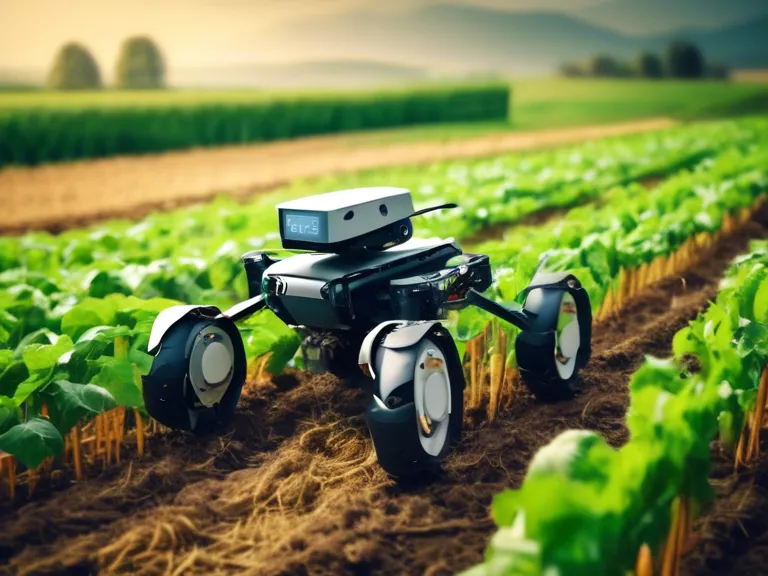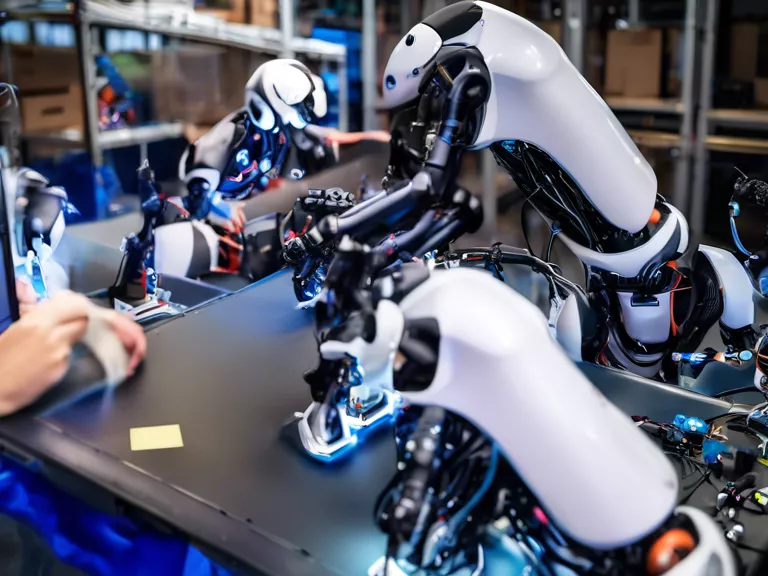
Robotics in Agriculture: Smart Farming
Introduction
In recent years, the use of robotics in agriculture has been revolutionizing traditional farming methods. With the help of advanced technology, farmers are now able to automate tasks, increase efficiency, and improve crop yields. This trend towards smart farming is shaping the future of agriculture worldwide.
## Benefits of Robotics in Agriculture
One of the key benefits of using robotics in agriculture is the ability to perform repetitive tasks with precision and consistency. This includes planting seeds, applying pesticides, and harvesting crops. With robots taking on these labor-intensive jobs, farmers can save time and resources while improving overall productivity. Additionally, robots can operate 24/7, allowing for continuous monitoring and maintenance of crops.
Another advantage of robotics in agriculture is the ability to collect and analyze data. Robots equipped with sensors and cameras can gather real-time information on soil health, crop growth, and weather conditions. This data can be used to make informed decisions about irrigation, fertilization, and pest control, leading to more sustainable farming practices.
## Future Outlook
As technology continues to advance, the potential applications of robotics in agriculture are virtually limitless. From autonomous tractors to aerial drones, the possibilities for smart farming are expanding rapidly. With continued innovation and investment in this field, the future of agriculture looks brighter than ever.
## Conclusion
In conclusion, robotics in agriculture is redefining the way we grow food. By leveraging advanced technology, farmers are able to increase efficiency, reduce waste, and improve sustainability. As the global population continues to grow, the importance of smart farming practices will only continue to rise.
Glass of Win
Smile to Africa Adventure
Monika Brodka
USS Oriskany
Literati2
Penny Hardaway
Designed in Finland
Refiza
Dan Rodimer
Local Savage
ATW Traveler
Marcel Theroux
Kemble Gallery
Cronk's Oakridge
El Horizontal
Em Cada Pagina
Iroko Designs
La Fonda Mexican Restaurants
Layton Bio
Nanjing Expat
Richard YT
Righting Food
Shkodra Daily
Merabsp
pfoto rzd
Esculturasy Monumentos
Warren Indiana
Jintara Fan Club
fted cruz
Khamag Mongol
Military Art Company
beavtrav
Belum Lama
Blue Rooster Food Company
DJ Vibe
eugene the brand
hennypalooza.com
hillsideornamentals.com
Komik Gratis Online
matsunoyanotsuma.com
mix4max.com
sharingourfoodadventures.com
thebestbedlinenintheworld.com
thegrayandorange.com
toronto-restaurants.com
yamato-movie.com
Scoops Ice Cream Truck
Uncover Studios
Fc Lupopo
Toci Lamart



